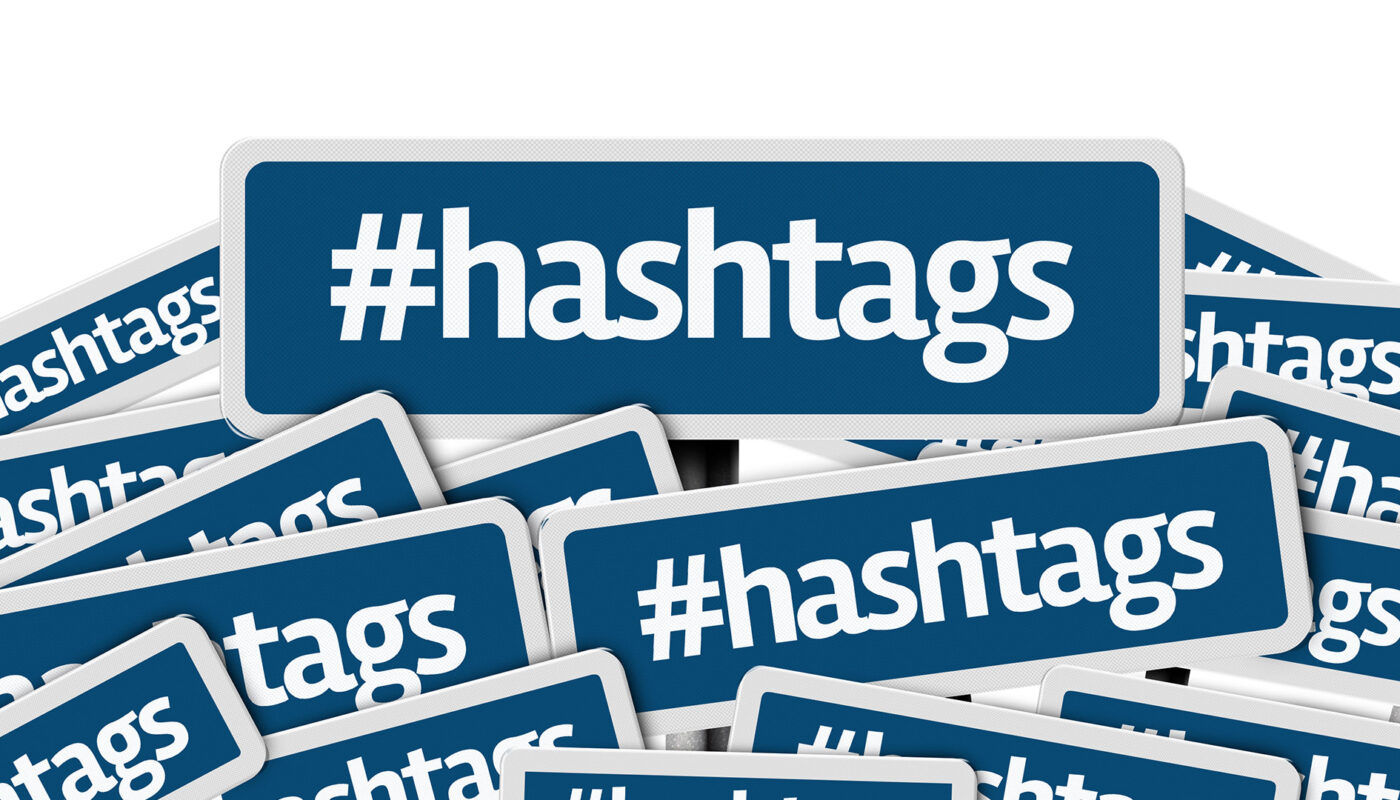#Hashtags are no longer just a fun trend on social media, but they have become an essential tool for businesses and individuals alike. When used correctly, hashtags can help you reach a wider audience, increase engagement, and build brand awareness. However, using them incorrectly can be detrimental to your social media strategy. That’s why it’s essential to understand the power of hashtags and how to use them effectively.
1. What are hashtags?
Hashtags are keywords or phrases that are preceded by the pound or hash symbol (#) and are used to create a hyperlink to a group of posts or content related to that particular topic. They are used primarily on social media platforms such as Twitter, Instagram, and Facebook, but can also be used on other platforms like LinkedIn and Pinterest.
The primary function of hashtags is to categorize content and to make it easier for users to find the posts that are relevant to their interests. When a user clicks on a hashtag, they are taken to a page where they can see all the posts that have used that same hashtag. Hashtags can be used to join conversations, to discover new content, to gain exposure, and to increase engagement.
Using hashtags effectively can take your social media marketing efforts to the next level. Identifying the right hashtags for your brand and incorporating them into your posts can help you reach a wider audience, increase engagement, and ultimately drive more traffic to your website. Understanding the basics of hashtags is the first step towards using them effectively in your social media strategy.
2. Why are hashtags important?
Hashtags are an essential aspect of social media marketing. They serve as a way to categorize and organize content on platforms such as Twitter, Instagram, and LinkedIn. When a user clicks on a particular hashtag or searches for one, they are shown all the posts or conversations related to that topic. This makes it easier for users to discover new content, connect with like-minded individuals, and engage in conversations related to their interests.
From a business perspective, hashtags provide an opportunity to increase brand visibility and reach a wider audience. By using relevant and popular hashtags, businesses can position their content in front of potential customers who may not have known about them otherwise. This can lead to increased engagement, followers, and ultimately sales.
Moreover, when a brand creates its own unique hashtag, it can help to establish brand identity and promote user-generated content. Encouraging customers to use your hashtag in their posts can create a sense of community and loyalty around your brand.
In summary, hashtags are a powerful tool for businesses to increase their visibility, reach a wider audience, and establish brand identity. It’s important to know when and how to use them effectively in order to maximize their impact on your social media marketing strategy.
3. The anatomy of a hashtag
To use hashtags effectively, it’s important to understand the anatomy of a hashtag. A hashtag is simply a keyword or phrase that is preceded by the pound or hash symbol (#). The hashtag can be placed anywhere within a post, but most commonly it’s located at the end of a caption.
Hashtags should be relevant to the content you’re sharing and the audience you’re trying to reach. For example, if you’re sharing a photo of a delicious pizza, using hashtags like #pizza, #foodie, #yum, and #foodporn would be appropriate. These hashtags help to categorize your post and make it more discoverable to those who are interested in those topics.
It’s also important to note that the number of hashtags you use matters. Using too many hashtags can make your post appear cluttered and spammy. On the other hand, using too few hashtags may limit the reach of your post. The sweet spot for most social media platforms is between 5-10 hashtags per post.
Another key factor to consider is the popularity of the hashtag. Using popular hashtags can help your post reach a wider audience, but it also means your post will be competing with a larger number of other posts using the same hashtag. Using niche or specific hashtags can help your post stand out to a smaller, but more engaged audience.
In summary, the anatomy of a hashtag includes relevant keywords or phrases, proper placement within a post, appropriate quantity of hashtags, and consideration of the popularity and specificity of the hashtag. By understanding the anatomy of a hashtag, you can use them effectively to increase the reach and engagement of your social media posts.
4. How to choose the right hashtags
Before you start using hashtags, it’s important to identify the right ones. This means choosing hashtags that are relevant to your post and will reach your target audience. The right hashtags can help you gain more visibility and attract new followers.
Start by researching popular hashtags that are relevant to your industry or niche. You can use tools like Hashtagify or All-Hashtag to find popular and related hashtags. Researching your competitors’ hashtags can also give you insight into what works and what doesn’t.
Next, consider using niche or specific hashtags. While popular hashtags can help you reach a wider audience, niche hashtags can help you reach a more targeted audience who are more likely to engage with your content. For example, if you sell vegan cosmetics, using the hashtag #veganbeauty would be more relevant than using a broader hashtag like #beauty.
Finally, keep your hashtags concise and easy to understand. Avoid using long or complicated hashtags that are difficult to read or remember. It’s also important to avoid using too many hashtags in one post, as this can make your post look spammy and decrease engagement.
Choosing the right hashtags takes time and research, but it’s worth it to ensure your posts are reaching the right audience and gaining maximum visibility.
5. How many hashtags should you use?
The use of hashtags can greatly improve the visibility of your content on social media platforms. However, it’s important to use them effectively to avoid coming across as spammy or overwhelming to your audience. So, how many hashtags should you use?
As a general rule of thumb, it’s best to use no more than 2-3 hashtags on Twitter and Facebook, and up to 10 on Instagram. It’s important to note that the number of hashtags you use should also depend on the platform you are using.
Research has shown that posts with 1-2 hashtags on Facebook and Twitter receive the most engagement, while posts with 9 or more hashtags on Instagram receive the highest levels of engagement.
However, it’s important to not sacrifice quality for quantity. The hashtags you use should be relevant to your content and audience. Avoid using overly generic hashtags as they may not attract the right audience. Instead, use specific and targeted hashtags that are related to your niche or industry.
In summary, the number of hashtags you use should depend on the platform you are using and the relevance of the hashtags to your content. Don’t overdo it, but also don’t be afraid to use them if they can help your content reach a larger audience.
6. How to use hashtags on various social media platforms
Hashtags have become an integral part of social media, and their usage has grown exponentially over the years. However, the use of hashtags differs from one social media platform to another.
On Twitter, hashtags are effectively used to join conversations on current events, trending topics, and chats. Users can quickly join in the conversation by searching for the hashtag or clicking on it. It’s essential to keep your hashtags short and simple on Twitter, and always include relevant hashtags to the topic you’re discussing.
Instagram, however, is one of the most popular platforms where hashtags are used. They are used to discover new accounts, gain more followers, and increase visibility of your content. Instagram allows up to 30 hashtags per post, and it is important to use relevant hashtags that are specific to your post. It is also important to keep an eye on trending hashtags and incorporate them into your own posts.
On LinkedIn, hashtags are used to increase visibility and engagement on posts. However, it’s important not to overdo it on LinkedIn, as too many hashtags can be seen as spammy. Stick to using 2-3 relevant hashtags that are specific to the content you’re sharing.
Lastly, Facebook hashtags are not as popular as on other platforms, but they are still effective in increasing visibility on posts. When using hashtags on Facebook, it’s important to use them sparingly and to only use relevant hashtags that are specific to the content you’re sharing.
In conclusion, understanding how to use hashtags effectively on each social media platform can help increase visibility, engagement, and ultimately grow your social media presence.
7. Best practices for using hashtags
Using hashtags effectively can take some practice, but following some best practices can make a big difference in their impact. Here are some tips to keep in mind when using hashtags:
1. Keep it relevant: Use hashtags that are relevant to your post and your brand. Don’t use a popular hashtag just because it’s popular if it doesn’t relate to your content.
2. Keep it simple: Use concise and easy-to-read hashtags that are easy to remember. Avoid using long or complicated hashtags that are difficult to spell or understand.
3. Don’t overdo it: Using too many hashtags can make your post look spammy and can actually have a negative impact on engagement. Stick to a few relevant hashtags per post.
4. Research popular hashtags: Use tools like Hashtagify or RiteTag to research popular hashtags in your industry or niche. This can help you find relevant hashtags that will help your content reach a wider audience.
5. Create branded hashtags: Use your brand name or tagline in your hashtags to create a branded hashtag. This can help build brand awareness and create a sense of community around your brand.
6. Don’t use banned hashtags: Some hashtags are banned by Instagram or other social media platforms, either because they are inappropriate or have been associated with spam. Make sure you check your hashtags before using them to avoid any issues.
By following these best practices, you can use hashtags effectively to reach a wider audience and build your brand on social media.
8. What not to do when using hashtags
When it comes to using hashtags, there are a few things you should avoid doing. Firstly, avoid using too many hashtags in your post. This can make your post look spammy and can be overwhelming for your followers. A good rule of thumb is to use no more than three hashtags per post.
Another mistake to avoid is using irrelevant hashtags. If you’re posting about a specific topic, make sure the hashtags you use are related to that topic. Using popular hashtags just to gain more likes or followers can actually hurt your engagement in the long run.
It’s also important to avoid using offensive or inappropriate hashtags. While it may seem funny or edgy at the time, it can quickly backfire and damage your brand’s reputation.
Lastly, don’t forget to research the hashtags you plan to use. Some hashtags may have a negative connotation or be associated with controversial topics, so it’s important to do your due diligence before using them.
By avoiding these common mistakes, you can ensure that your hashtags are effective and positively impact your social media strategy.
9. Tracking your hashtag performance
Tracking your hashtag performance is key to understanding how effective your campaign is, and whether you are reaching your target audience. By tracking your hashtag, you can see how many people are using it, how many times it has been mentioned, and how many people have engaged with your content.
There are several tools available that can help you track your hashtag performance, such as Hootsuite, Sprout Social, and Keyhole. These tools allow you to monitor the performance of your hashtag in real-time, and they provide valuable insights into how your audience is engaging with your content.
Another way to track your hashtag performance is to use social media analytics. Most social media platforms provide their own analytics tools that allow you to track the performance of your content and your hashtags. By using these tools, you can see how many people are engaging with your content, and how your hashtag is performing compared to other hashtags in your industry.
It’s important to regularly track your hashtag performance so that you can make adjustments to your campaign if necessary. If you find that your hashtag is not performing as well as you had hoped, you can try tweaking your content, changing your hashtag, or targeting a different audience. By monitoring your performance, you can ensure that your hashtag campaign is effective and that you are reaching your target audience.
10. Conclusion and final thoughts on the power of hashtags.
In conclusion, hashtags are incredibly powerful tools that can help you reach a wider audience, increase engagement, and ultimately grow your brand. But like any tool, it’s important to use them effectively and strategically.
Firstly, avoid overusing hashtags in your posts. While it may be tempting to add as many hashtags as possible, it can actually have a negative impact on engagement and make your posts look spammy. Stick to a few relevant hashtags that accurately describe the content of your post.
Secondly, do your research and use popular hashtags that are relevant to your brand or industry. This will help you reach a larger audience and increase the chances of your posts being discovered by new followers.
Lastly, be creative with your hashtags and use them to tell a story or convey a message. Hashtags can be a powerful way to connect with your audience and build a community around your brand.
In the end, hashtags are just one part of a larger social media strategy. By combining them with high-quality content, engaging with your followers, and staying up to date with the latest trends, you can create a powerful online presence that drives results for your business.
Enjoyed the read? Share!




silagra pills
An interesting discussion is definitely worth comment. I do believe that you should publish more about this subject, it may not be a taboo matter but typically people dont discuss these subjects. To the next! Many thanks!!